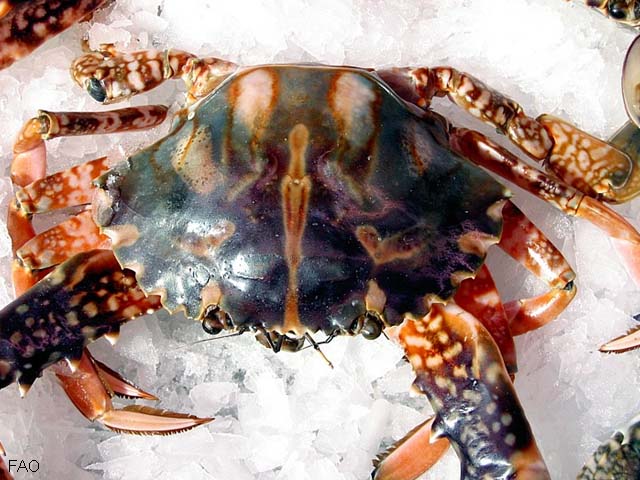| Portunidae (swimming crabs) |
| 20 cm CW (male/unsexed) |
|
benthic; marine; depth range 5 - 118 m |
| Indo-West Pacific: reaching Japan and Australia. Subtropical and tropical climates. |
|
Carapace ovate; 5 distinct teeth on each anterolateral margin. Color: distinctive pattern of longitudinal stripes of maroon and white, usually with distinct white cross on median part of gastric region; legs and pincers with numerous scattered with white spots. |
| Especially important in markets in East Asia, where it commands substantially higher premium prices being sold for US$8 to US$15 per kg. Minimum depth range from Ref. 121712. Occurs at depths from 30 to 60 m, in sandy-muddy substrates, subtropical and tropical climates (Ref. 343). Usually occurs in sublittoral environment (Ref. 121718), on rocky intertidal (Ref. 104840) and stony coasts (Refs. 121712, 121718), including reef flats at depths of around 10-60 m (Ref. 121718). Also found in estuarine area (Ref. 108435) and offshore (Ref. 121719). Juveniles live in sandy coastal and intertidal habitats; adults are preferentially found in deeper muddy areas (Ref. 121720). Juveniles reported to be found symbiotic under bells of jellyfish (Ref. 125642). |
|
Not Evaluated (N.E.) Ref. 123251)
|
| harmless |
|
Source and more info: www.sealifebase.org. For personal, classroom, and other internal use only. Not for publication.

